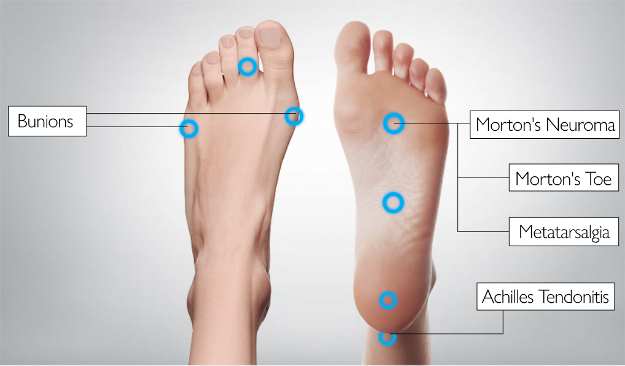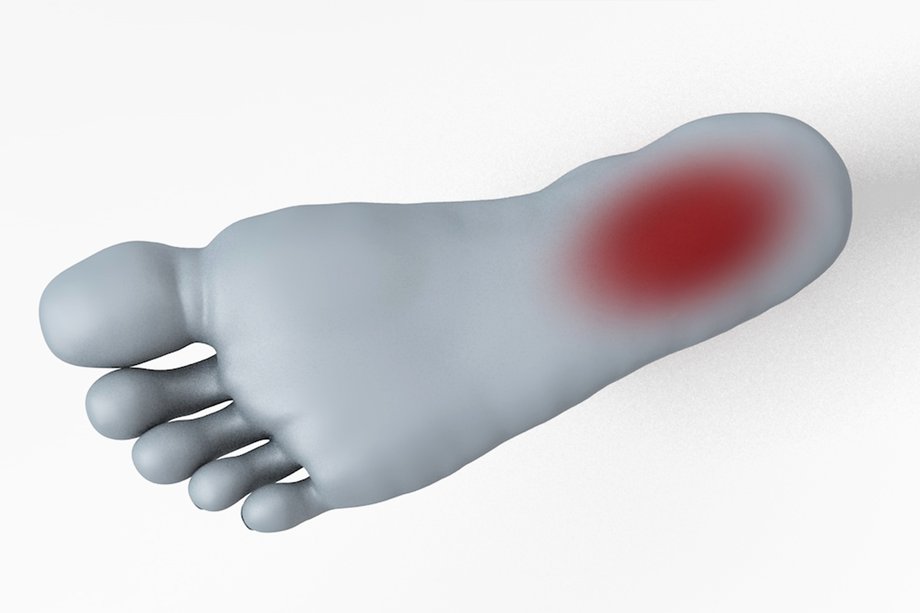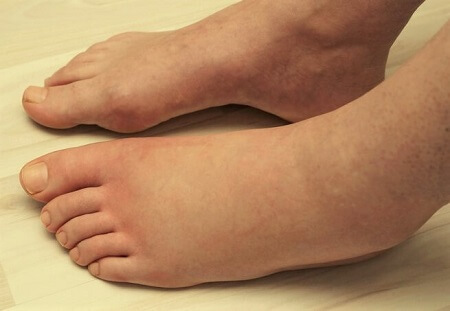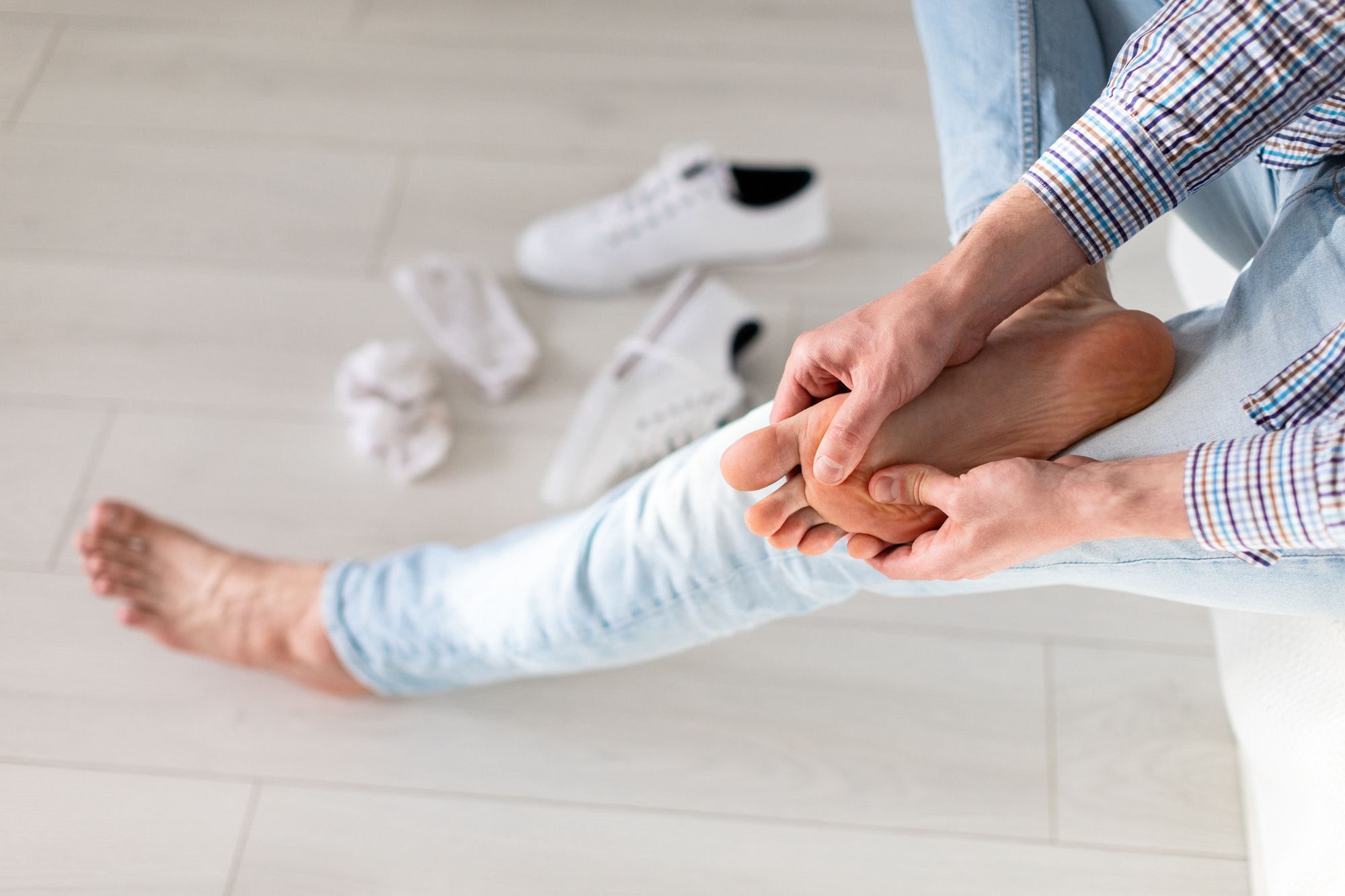Identifying the Causes of Bottom of the Foot Pain and Swelling
Bottom of the foot pain and swelling can significantly impact an individual’s daily activities and overall quality of life. Understanding the root cause of this discomfort is crucial for effective treatment and prevention. Various factors can contribute to pain and swelling at the bottom of the foot, including plantar fasciitis, Achilles tendonitis, and bone fractures. Each condition has distinct symptoms and requires specific treatment approaches.
Plantar fasciitis, the most common cause of bottom of the foot pain and swelling, affects the band of tissue (plantar fascia) that runs along the bottom of the foot, connecting the heel bone to the toes. This condition typically causes a stabbing pain in the heel, which is usually worse in the morning or after long periods of rest. Inflammation and micro-tears in the plantar fascia can lead to pain and swelling, making it challenging to perform daily activities such as walking, running, or standing for extended periods.
Achilles tendonitis, another potential cause of foot pain and swelling, affects the Achilles tendon, which connects the calf muscles to the heel bone. This condition often results from repetitive stress or overuse, causing inflammation and pain in the back of the heel and along the tendon. Bone fractures, particularly in the metatarsal or calcaneal bones, can also lead to foot pain and swelling. These fractures can occur due to high-impact trauma, such as a fall or a direct blow to the foot, or from repetitive stress, such as in long-distance runners.
Plantar Fasciitis: The Most Common Cause of Bottom of the Foot Pain and Swelling
Plantar fasciitis is the most prevalent cause of bottom of the foot pain and swelling, affecting approximately 2 million Americans each year. This condition results from inflammation and micro-tears in the plantar fascia, a thick band of tissue that runs along the bottom of the foot, connecting the heel bone to the toes. The primary function of the plantar fascia is to support the arch of the foot and facilitate walking, running, and standing.
Plantar fasciitis often causes a stabbing pain in the heel, which is usually worse in the morning or after long periods of rest. The pain typically subsides after a few minutes of walking but may return after prolonged activity or standing. The exact cause of plantar fasciitis remains unclear, but several factors can contribute to its development, including:
- Excessive pronation (rolling inward) of the foot
- High arches or flat feet
- Tight calf muscles or Achilles tendon
- Sudden increase in physical activity or weight-bearing exercises
- Inadequate footwear or worn-out shoes
- Prolonged standing or walking on hard surfaces
Plantar fasciitis can significantly impact an individual’s daily activities and overall quality of life, making it challenging to perform routine tasks such as walking, running, or even standing for extended periods. Seeking early intervention and appropriate diagnosis is crucial for effective treatment and prevention of future episodes.
Conservative Treatment Options for Bottom of the Foot Pain and Swelling
Treating bottom of the foot pain and swelling often involves a multi-faceted approach, combining various non-surgical methods to alleviate discomfort and promote healing. Rest, ice, compression, and elevation (RICE) are essential for reducing inflammation and pain. Resting the affected foot and avoiding activities that exacerbate the pain is crucial for recovery. Applying ice to the affected area for 15 to 20 minutes, several times a day, can help reduce swelling and numb the pain. Compression with an elastic bandage or brace can provide additional support and limit swelling, while elevating the foot above the heart level can further reduce swelling.
Physical therapy is another effective treatment option for bottom of the foot pain and swelling. A physical therapist can design a customized exercise program to improve flexibility, strength, and range of motion in the foot and ankle. These exercises may include stretching, strengthening, and balance exercises to address the underlying causes of foot pain and swelling.
Orthotics, such as shoe inserts or custom-made orthotic devices, can provide additional arch support, cushioning, and stability to alleviate foot pain and swelling. Over-the-counter orthotics, such as gel heel cups or arch supports, can be helpful for mild cases of foot pain and swelling. However, individuals with more severe symptoms may require custom-made orthotics prescribed by a podiatrist or other healthcare professional.
Medication, such as nonsteroidal anti-inflammatory drugs (NSAIDs) or corticosteroids, can also help reduce pain and inflammation in the foot. NSAIDs, such as ibuprofen or naproxen, can be taken orally or applied topically to the affected area. Corticosteroids, such as prednisone, can be prescribed in more severe cases, but their long-term use is not recommended due to potential side effects.
A combination of these conservative treatment options can provide significant relief for bottom of the foot pain and swelling. However, it is essential to consult a healthcare professional for an accurate diagnosis and personalized treatment plan.
The Role of Supportive Footwear in Reducing Foot Pain and Swelling
Proper footwear plays a crucial role in alleviating bottom of the foot pain and swelling. Wearing shoes that provide adequate arch support, cushioning, and stability can significantly reduce the stress on the plantar fascia and Achilles tendon, thereby minimizing pain and inflammation. When selecting shoes, consider the following features:
- Arch support: Look for shoes that offer good arch support, especially if you have flat feet or high arches. Custom orthotics can also provide additional arch support if needed.
- Cushioning: Shoes with ample cushioning can absorb shock and reduce the impact on the foot, helping to alleviate pain and swelling.
- Stability: Shoes with a stable heel counter and good motion control can prevent excessive pronation or supination, reducing the risk of foot pain and swelling.
- Flexibility: While stability is essential, shoes should also have some flexibility in the forefoot to allow for natural movement and prevent stiffness.
Some shoe brands and models are particularly well-suited for individuals with foot pain and swelling. For example, brands such as New Balance, ASICS, and HOKA offer shoes with excellent arch support, cushioning, and stability. When trying on shoes, ensure they fit properly and provide enough room in the toe box. It is also essential to replace worn-out shoes regularly, as they can lose their support and cushioning over time.
In addition to shoes, orthotics can also provide additional support and cushioning for the foot. Custom orthotics, designed by a podiatrist or other healthcare professional, can address specific foot issues and provide personalized support. Over-the-counter orthotics, such as gel heel cups or arch supports, can also be helpful for mild cases of foot pain and swelling.
How to Perform Stretches and Exercises for Bottom of the Foot Pain and Swelling
Stretching and exercising the feet and lower legs can help alleviate pain and swelling associated with bottom of the foot issues such as plantar fasciitis and Achilles tendonitis. Incorporating these stretches and exercises into your daily routine can improve flexibility, strength, and range of motion, promoting overall foot health. Here are some effective stretches and exercises to consider:
1. Plantar Fascia Stretch
Instructions: Sit on a chair and place the affected foot on your opposite knee. Pull the toes back gently until you feel a stretch in the arch of your foot. Hold for 15-30 seconds, then release. Repeat this stretch 2-3 times, several times a day.
2. Achilles Tendon Stretch
Instructions: Face a wall and place both hands on the wall at shoulder height. Step back with the affected leg, keeping the knee straight, and lean forward, feeling a stretch in the calf and Achilles tendon. Hold for 15-30 seconds, then release. Repeat this stretch 2-3 times, several times a day. For a deeper stretch, bend the knee slightly.
3. Towel Curls
Instructions: Sit on a chair and place a small towel on the floor in front of you. Place the affected foot on the towel and use your toes to scrunch up the towel, pulling it towards you. Release and repeat for 1-2 minutes, several times a day. This exercise helps strengthen the foot muscles and improve flexibility.
4. Toe Extensions
Instructions: Sit on a chair and place both feet flat on the floor. Lift the toes of the affected foot off the ground, keeping the ball of the foot in contact with the floor. Hold for 5-10 seconds, then lower the toes back down. Repeat this exercise 10-15 times, several times a day. This exercise helps strengthen the foot muscles and improve range of motion.
When performing these stretches and exercises, it is essential to listen to your body and avoid pushing yourself too hard. If you experience increased pain or discomfort, stop the exercise and consult a healthcare professional. Consistency and patience are key to seeing improvements in foot pain and swelling.
When to Consult a Medical Professional for Foot Pain and Swelling
While many cases of bottom of the foot pain and swelling can be managed with conservative treatments and home remedies, there are certain scenarios where seeking professional medical help is necessary. If you experience any of the following symptoms, consult a healthcare professional as soon as possible:
- Persistent pain: If your foot pain and swelling do not improve after several days of rest, ice, compression, and elevation (RICE), or if the pain worsens over time, it may be a sign of a more severe condition requiring medical intervention.
- Inability to walk: If your foot pain is so severe that you cannot walk or bear weight on the affected foot, it is crucial to seek medical attention. This level of pain could indicate a fracture, severe inflammation, or other conditions that require prompt treatment.
- Signs of infection: If you notice redness, warmth, or pus draining from the affected area, these could be signs of an infection. Infections in the foot can lead to more severe complications if left untreated, so it is essential to consult a healthcare professional as soon as possible.
- Numbness or tingling: If you experience numbness, tingling, or a loss of sensation in the affected foot, this could be a sign of nerve damage or other neurological conditions. Seek medical attention to determine the underlying cause and develop an appropriate treatment plan.
Early intervention and appropriate diagnosis are crucial for optimal recovery from foot pain and swelling. A healthcare professional can evaluate your symptoms, perform any necessary diagnostic tests, and recommend the most effective treatment options for your specific condition. By seeking medical help when necessary, you can take the necessary steps to alleviate your foot pain and swelling and maintain your overall foot health.
Preventing Future Bouts of Bottom of the Foot Pain and Swelling
Taking proactive steps to prevent bottom of the foot pain and swelling can help you maintain your foot health and overall quality of life. Here are some practical tips and strategies to consider:
- Maintain a healthy weight: Excess weight can put additional stress on the feet, leading to pain and swelling. By maintaining a healthy weight through a balanced diet and regular exercise, you can reduce the risk of foot problems.
- Gradually increase physical activity: If you are starting a new exercise routine or increasing your physical activity level, do so gradually. Rapidly increasing your activity level can put excessive stress on the feet, leading to pain and swelling. Start slowly and build up gradually over time.
- Wear appropriate footwear: Proper footwear can significantly reduce the risk of foot pain and swelling. Look for shoes with good arch support, cushioning, and stability. Avoid wearing worn-out shoes or shoes that do not fit properly. If necessary, consider using custom orthotics to provide additional support and cushioning.
- Stretch and strengthen the feet: Regularly stretching and strengthening the feet can help prevent pain and swelling. Incorporate exercises such as plantar fascia stretches, Achilles tendon stretches, and towel curls into your daily routine. These exercises can improve flexibility, strength, and range of motion in the feet, reducing the risk of injury and pain.
- Cross-train: Engaging in a variety of physical activities can help prevent overuse injuries and reduce the risk of foot pain and swelling. Cross-training can also help prevent boredom and burnout, making it easier to maintain a consistent exercise routine.
- Rest and recover: Make sure to give your feet time to rest and recover after physical activity. This can help prevent overuse injuries and reduce the risk of pain and swelling.
By incorporating these tips and strategies into your daily routine, you can reduce the risk of bottom of the foot pain and swelling and maintain your overall foot health. Remember, consistency and long-term commitment are key to seeing improvements in foot health and preventing future issues.
Living an Active Life Despite Foot Pain and Swelling
Foot pain and swelling can be frustrating and debilitating, making it challenging to pursue your passions and hobbies. However, with the right mindset and strategies, it is possible to stay active and engaged while managing your symptoms. Here are some success stories, adaptive techniques, and alternative activities to consider:
Success Stories
Many individuals have successfully managed their foot pain and swelling while continuing to lead active lives. For example, Sarah, a runner, was diagnosed with plantar fasciitis but refused to let it slow her down. She worked with a physical therapist to develop a stretching and strengthening routine, switched to more supportive shoes, and modified her training schedule to include more rest days. With dedication and perseverance, Sarah was able to complete a marathon despite her foot pain and swelling.
Adaptive Techniques
Adapting your activities to accommodate your foot pain and swelling can help you stay active while minimizing discomfort. For example, if you enjoy running but find it too painful, consider switching to a low-impact activity such as swimming or cycling. If you enjoy hiking, consider using trekking poles to reduce the impact on your feet. If you have a job that requires long periods of standing, consider using a cushioned mat or wearing compression socks to reduce swelling and discomfort.
Alternative Activities
Sometimes, it may be necessary to find alternative activities that are less stressful on the feet. Consider trying yoga, Pilates, or tai chi, which can improve flexibility, strength, and balance while reducing stress and promoting relaxation. If you enjoy team sports, consider switching to a less foot-intensive sport such as golf or bowling. If you enjoy outdoor activities, consider kayaking, canoeing, or fishing, which can provide a peaceful and low-impact way to enjoy nature.
By staying positive, adapting your activities, and exploring alternative options, you can continue to pursue your passions and hobbies despite foot pain and swelling. Remember, it may take time and patience to find what works best for you, but the journey is worth it. With the right mindset and strategies, you can maintain an active and fulfilling life while managing your foot pain and swelling.







